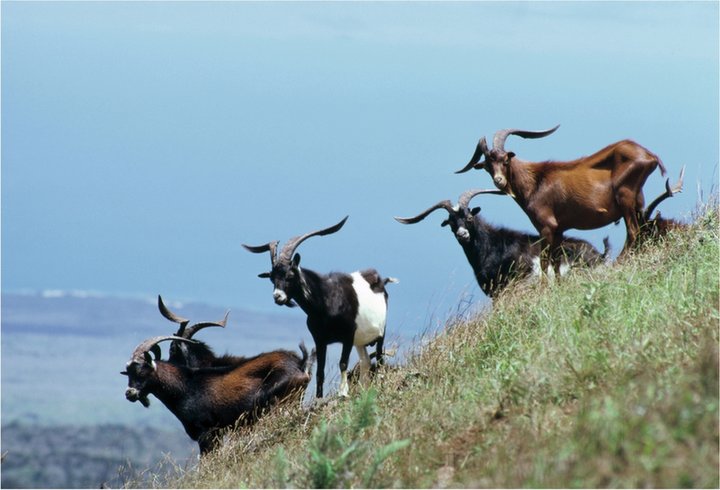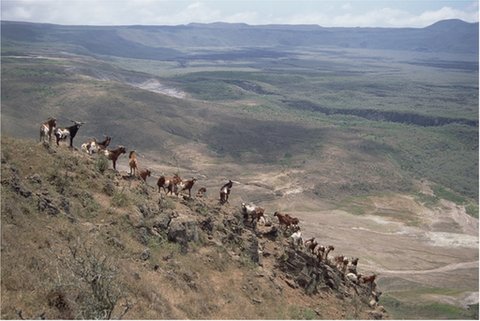
Thisgrasslandwasoncecoveredbythick forest.
BetweenManandGoat
WeknowfromtheGalápagosConservationTrustthatthereare13introducedspeciesofmammalsinthe Galápagos.✻Theonethathascausedthemostdamageisthegoat.Whalers,pirates,andfishers,whowerelookingforasteadysourceofmeat,introducedgoatstotheislandsinthe1850s.Withnoislandpredatorsandtheabilitytobreedtwiceayear,thegoatsgrewquicklyonFloreana,SantaFe,Española,SanCristóbal,Isabela,Pinta,andMarchena.Bythelate1990s,thetotalgoatpopulationhadreachedsix figures.
Goatsareknownfortheirappetites.Overtime,theyatetheirwaythroughlargeswathsoflandonmanyoftheislands.Thegoatsatethesamethingsthetortoisesate,rightdowntothetortoise’sgo‑tofood,thepricklypear cactus.
✻ Bats andriceratsaretheonlymammalsnativetotheGalápagos Islands.
TakingBacktheIslands
Onceaninvasivespeciestakesover,howdoyougetridofit?There’snosingle,directmethod.Galápagosfarmersfighttheblackberryoneplantatatime.Theyripthemoutby hand.
Tacklingthegoatproblemwasanothermatter.Thedangerwasclear:Thegoatshadgrazedtheislandsmercilessly.Theirpresencewascausingerosionandthreateningthesurvivalofrareplantsandtrees.Keyendemicspecies,likethegianttortoise,wereatrisk.Thegoatshadtogo.ProjectIsabelawasenactedin2004.TensofthousandsofgoatswerekilledonIsabela.Itwasanextremesolution,butonedeemednecessarytoprotecttheislands.Asthegoatsdisappeared,plantandanimallifeontheislands rebounded.

aherdofgoatsonIsabela Island
Invasivespeciesposearealthreattotheislands.Eachintroducedspeciesmustbemonitoredandmanagedtoprotectthe islands.
Goatseatplantslikepricklypearcactus,whichisfoodforgianttortoises,landiguanas,doves,cactusfinches,and mockingbirds.